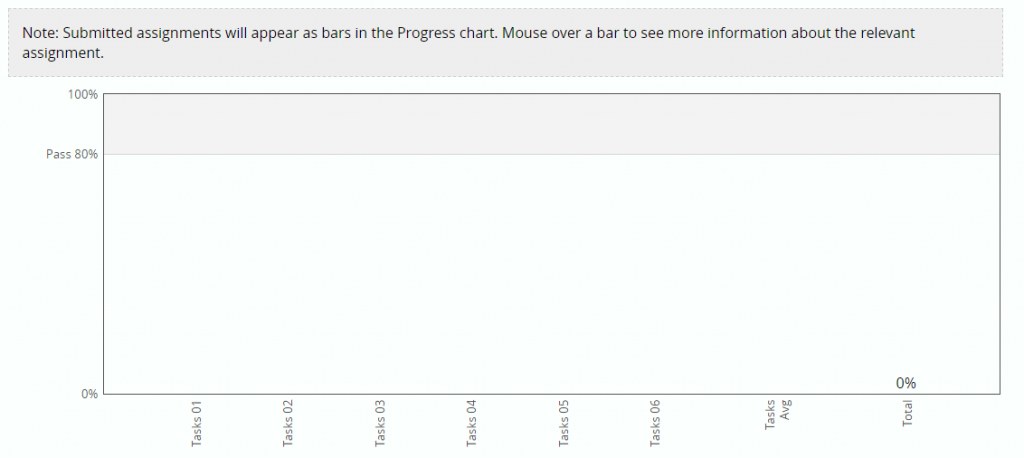LMS: https://lagunita.stanford.edu/ (Stanford Online)
- Delivery format(s) and the platform(s) implemented to deliver the course. Indicate how the course is scheduled and delivered (on term basis, self-paced, or differently). Whether the course uses one LMS for delivery or combines several platforms?
The course is self-paced, consisting of six, twenty minute lessons. You can start and end the course within the months that it is open (seems to have been open since June, 2014). The course is delivered wholeheartedly through Stanford Online.
- Course structure. Is the course structure presented visually and logically? Does it resemble a linear story, a hierarchical construction, a net, a circle or something else? Describe whether or not this structure looks pedagogically appropriate for the course?
The course is well designed, following a linear structure that scaffolds the pedagogy for the audience. It seems very appropriate because the course aims to build confidence and skillset in maths.
- Learning activities and guidelines. What learners are doing for learning, and what are the results of their learning? What digital formats for the course material are used to organize the learning process (texts, video, audio, computer simulations, digital learning objects, or other)? What guidelines regulate the learning process? Whether the content is released gradually (by weeks) or all available from the beginning to the end?
Learners are working through six modules or lessons, that are all available from beginning to end (i.e. not gradually released). Students work through each linear module, which, “combine presentations from Dr. Boaler and a team of undergraduates, interviews with members of the public, cutting edge research ideas, interesting visuals and films, and explorations of math in nature, sport and design” (https://lagunita.stanford.edu/courses/Education/EDUC115-S/Spring2014/about).
Dr. Boaler suggests that only one lesson be done per week, in order for the learning to be consolidated. However, learners may advance at their own pace. Each lesson consists of about 3 to 10 mini-lessons, with each following an objective quiz, followed by a final subjective quiz, asking participants to write down key learning from the module. Each quiz is worth 1 point each. This is all graphically presented on a “Progress” tab, highly visible within the course LMS (see Figure 1.1 below).
Figure 1.1 – Course progress graph

- Discussions organization. Whether the discussions are scheduled to be conducted at particular moments in the course or some other organizational mechanism is used? Whether the discussions are on the same site with the course content, or designed on a different platform? Whether the discussions’ tool allows creating multiple threads in one topic, or only one thread per topic? Do you think these differences in the discussions’ tools functionalities influence the results of learning?
Discussions are organized within the LMS, under a self-titled tab, highly visible within the course design. It seems that there are a few “pinned” threads, outlining general procedures and FAQs. However, discussion and rules seem to be very open. There are multiple threads, some relating to course material, others not. There are even multiple threads on the same topic. Much of the discussion is limited to a few words, and since the course seems to be aimed at upper elementary and middle-school students, the discussion appears to need regulating in terms of appropriateness and maturity.
I think it would be better if discussion threads were titled under headings of the mini-lessons within each of the six modules (e.g. “Mathematical Reasoning”). This would organize discourse and discourage redundant posts because respondents could easily navigate to relevant discussion threads. Activities within the modules should require participants to post to the discussion for the response to help promote social inquiry and collaboration. There should be moderation from the instructor (or assistants), if discourse starts lacking in terms of richness, maturity and/or respect for others. Yes, there could also be a “Student Café” section, where more liberal and unrelated postings could be tolerated.
- Forms of feedback and Evaluation methods. What kinds of assignments, tests, practicums are implemented for evaluating the learning results? Is any certification or other types of recognition procedure implemented?
There is no formal assessment and grading for this course. As mentioned above, there are six modules, each containing 3-10 mini-lessons. After each mini-lesson, there is a respective quiz. All quizzes are one question and are worth one point. The majority are objective (e.g. What is 12 x 15?), however the quiz at the end of each module asks for subjective, reflective thoughts and key learning to be written down. The participant is given a 1point score, regardless. All scores are graphed, represented in Figure 1.1 above. These points are just to reflect personal progress.
In addition, there is a pre and post survey to this course.
There is no formal feedback, either. The course is free, does not count for university credit, yet those who finish it can apply for a completion certificate.
- Instructor’s involvement. How much the instructor(s) presence is visible in delivering the course material and providing feedback?
The instructor is visible present in some of the instructional videos and course material within the modules, however, the discussions have minimal moderation, if at all. There are no signs of any type of formal feedback from the instructor, either.

